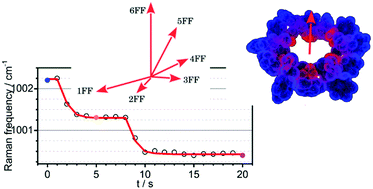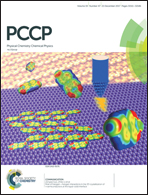Two-step kinetic model of the self-assembly mechanism for diphenylalanine micro/nanotube formation†
Abstract
Peptide nanostructures compose a new class of materials that have gained attention due to their interesting properties. Among them, nanotubes of diphenylalanine (FF) and its analogues have been one of the most studied structures in the last few years. Their importance originates from the need to better understand the formation of β-amyloid fibrils which are associated with Alzheimer's disease. In this work, the FF self-assembly process was probed using time-resolved Raman microscopy. The changes in the Raman spectra are followed over time after injecting water into a FF-film until micro/nanotubes (MNTs) are formed. Specific features of the Raman spectra clearly suggest that FF-molecules after water injection form an intermediate species before forming FF-MNTs. The broad Raman bands observed for the intermediate species suggest the presence of very heterogeneous structures based on FF. The FF-MNTs appear almost instantaneously (detected via the rise of the typical Raman bands of FF-MNTs at 761, 1249 and 1426 cm−1) after the intermediate structures are formed. This delayed formation of FF-MNTs supports a nucleation process. The formation via nucleation of FF-MNTs is further corroborated by a simulation of the Raman spectra based on a 2-step kinetic model and the respective vibrational Raman modes are identified using Density Functional Theory vibrational calculations. Our results indicate that the driving force for the FF-MNT patterning process is the electric dipole re-orientation originating from the FF dipeptide unit connectivity over time.



 Please wait while we load your content...
Please wait while we load your content...